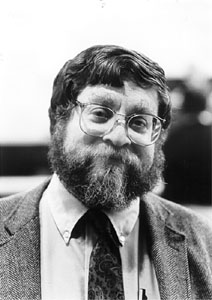
When Wisconsin Public Radio invited Ron Kahn, Oberlin professor of politics, to comment on and discuss with listeners the October 17 second presidential debate, he was delighted. The only other time he had been invited to share his views on a call-in show was a few years ago, when the College's WOBC asked him to handle the phones early one Sunday morning. Nobody called.
This time, on "Conversations with Tom Clark," Kahn's comments stimulated many callers from the Wisconsin, Minnesota, Iowa, and Illinois listening area to respond.

An expert in constitutional law, Kahn has spoken in San Francisco and Glasgow, Scotland, this year on decision making in the Supreme Court and the rights of subordinated groups. In November he was an invited participant in the University of Chicago's conference, The Liberal Tradition in American Politics: Consensus, Polarity, or Multiple Traditions.
To prepare himself for the more informal setting of public radio, Kahn sought to review everything available about the election. During the debate, he paid attention not only to what was said, but to what was not said. He was particularly interested in how visual cues, such as Clinton and Dole's body English, would inform the candidates' success.
Kahn also invited four Oberlin politics and prelaw students to watch the debate with him at his home. They were joined by the Kahns' house guest, Elizabeth Ryan Cole '68, a professor at Vermont Law School, who was in the area to present a program at the Clinical Law Association Conference in Cleveland. Afterwards, Kahn interviewed his guests about their reactions. He later found that the Oberlinians' opinions were very much in line with those expressed the following morning by the WPR callers:
Kahn, who admits to being voluble--and sometimes loquacious, he adds--was pleased that he didn't interrupt any of the callers, all of whom were perspicacious, knowledgeable, and good at getting their points across, he says. In fact, his performance was so welcomed by WPR, he has been invited to work with the producers in the future.
--MC
Return to Around Tappan Square
Return to the OAM Fall-Winter 1996 Table of Contents